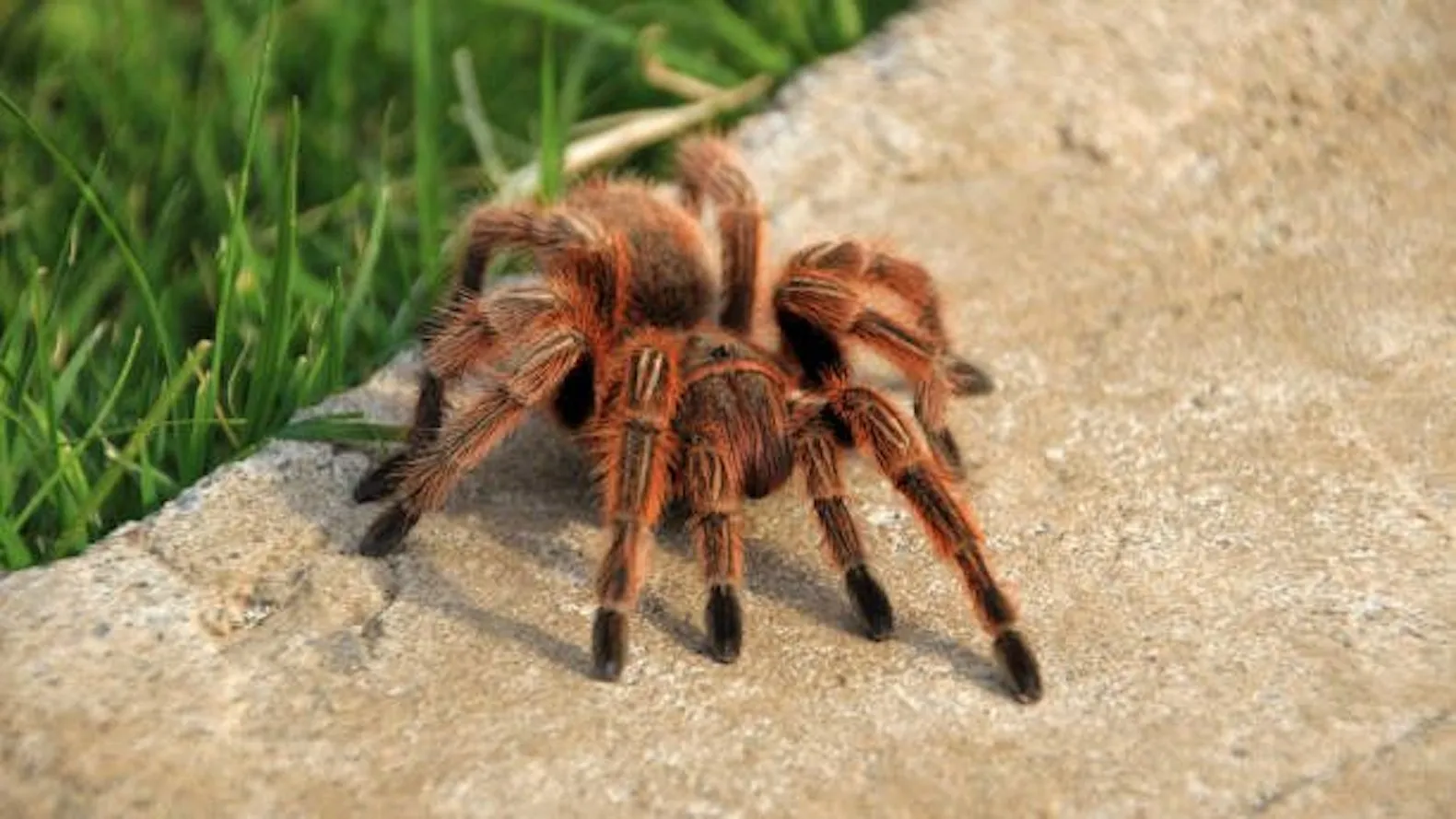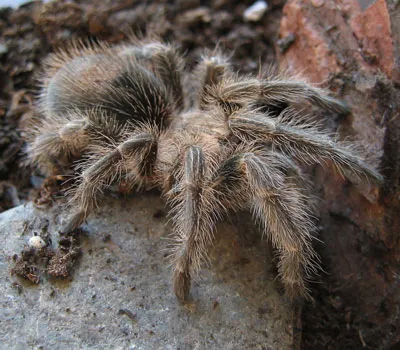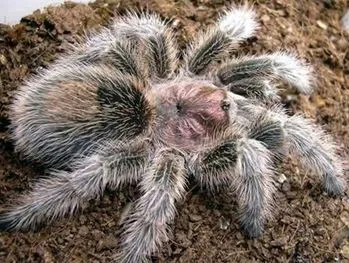Understanding the Brazilian Rose Hair Tarantula
The Brazilian Rose Hair Tarantula (Grammostola rosea), a popular choice for beginner tarantula keepers, is known for its docile temperament and relatively easy care requirements. Native to the grasslands of Brazil, Uruguay, and Paraguay, these fascinating arachnids offer a unique opportunity to observe and appreciate the intricate lives of spiders. Before bringing one home, it’s essential to understand their needs to provide a healthy and enriching environment. They are terrestrial spiders, meaning they primarily live on the ground, and they are crepuscular, being most active during dawn and dusk. Their lifespan can range from 10-20 years for females, making them a long-term commitment. Understanding their natural behaviors is the first step in providing appropriate care and ensuring their well-being.
Origin and Habitat
Brazilian Rose Hair Tarantulas originate from the arid grasslands of South America. In their natural habitat, they burrow underground or seek shelter under rocks and in crevices to escape the heat and predators. The climate they are accustomed to is generally warm and dry, although humidity levels can fluctuate. Replicating aspects of their natural environment in captivity is crucial for their health and happiness. Providing a similar substrate and temperature gradient can significantly contribute to their overall well-being. Understanding their environmental needs is paramount for successful tarantula keeping, as it directly impacts their behavior, feeding habits, and overall health. The better you can mimic their natural environment, the more likely your tarantula is to thrive.
Appearance and Characteristics

These tarantulas are named for the rose-colored hairs that adorn their carapace and legs, though the intensity of the rose color can vary. They typically have a leg span of 5-6 inches when fully grown. Their bodies are covered in a dense layer of urticating hairs, which they can flick off their abdomen as a defense mechanism. These hairs can cause irritation if they come into contact with the skin. They have a relatively docile temperament compared to some other tarantula species, making them a good choice for novice keepers. Males are generally smaller and have a shorter lifespan than females. Careful observation of their appearance can help keepers identify potential health issues, such as swelling or discoloration.
Essential Brazilian Rose Hair Tarantula Care Tips
Creating the Right Enclosure
The enclosure is the tarantula’s home, so it is important to create an appropriate environment. A ten-gallon tank is usually sufficient for an adult Brazilian Rose Hair Tarantula, although a larger enclosure is always preferable. The enclosure should have a secure lid to prevent escapes and adequate ventilation. It is also essential to provide a hide, such as a piece of cork bark or a hollow log, where the tarantula can retreat and feel secure. Avoid using screen lids as they can catch the tarantula’s claws and cause injury. The overall size of the enclosure should allow the tarantula to move comfortably and have enough space for enrichment such as hides and water dishes. Remember to consider the growth of your tarantula; a larger enclosure may be necessary as it matures.
Choosing the Right Substrate

The substrate serves as the flooring of the enclosure and provides a place for the tarantula to burrow and feel secure. A good substrate retains some humidity and allows the tarantula to express its natural behaviors. A mix of peat moss, coconut fiber, and a small amount of vermiculite is an excellent choice. Avoid using cedar or pine shavings, as they can be toxic to tarantulas. The substrate should be deep enough, usually 3-4 inches, to allow for burrowing. Regular spot cleaning to remove waste and uneaten food is important. The substrate should be replaced entirely every few months to maintain cleanliness and prevent the buildup of harmful bacteria. Proper substrate selection is a fundamental aspect of tarantula care.
Maintaining Proper Temperature and Humidity
Brazilian Rose Hair Tarantulas thrive in a temperature range of 75-85°F (24-29°C). A heat mat placed on the side of the enclosure can provide the necessary warmth, but it’s crucial to avoid placing it directly under the tank, as this could cause overheating. Humidity levels should be maintained between 60-70%. This can be achieved by lightly misting one side of the enclosure every few days, allowing the other side to remain drier. A hygrometer can be used to monitor humidity levels. Good ventilation is also essential to prevent mold growth. Overly humid conditions can lead to health issues. Always make sure that the temperature and humidity levels are appropriate to prevent any problems.
Feeding Your Tarantula
What to Feed Your Brazilian Rose Hair Tarantula

A varied diet is essential to ensure your tarantula receives all the necessary nutrients. Crickets, mealworms, and roaches are all suitable food items. The size of the prey should be appropriate for the tarantula’s size; generally, the prey should be no larger than the tarantula’s body. It is important to dust the feeder insects with a calcium and vitamin supplement to ensure the tarantula gets the necessary nutrients for healthy growth. Remove any uneaten prey within 24 hours to prevent stress and the potential for the prey to harm the tarantula. Live prey provides enrichment for the tarantula and encourages natural hunting behavior. Be mindful of the source of the insects, ensuring they are raised in a clean and pest-free environment.
How Often to Feed Your Tarantula
Feeding frequency depends on the age of the tarantula. Spiderlings and juveniles need to be fed more often than adults. Spiderlings can be fed every other day, while juveniles can be fed 2-3 times a week. Adult Brazilian Rose Hair Tarantulas can be fed once or twice a week. Observe your tarantula’s feeding habits. A tarantula that consistently refuses food might be about to molt. Overfeeding can lead to obesity, while underfeeding can lead to poor health. Always monitor the tarantula and adjust the feeding schedule as needed. Make sure to provide a water source at all times, even if the tarantula doesn’t appear to be drinking frequently.
Providing Fresh Water
Clean, fresh water is vital for the health of your Brazilian Rose Hair Tarantula. A shallow water dish is ideal, and the water should be changed frequently, typically every day or two, to prevent bacterial growth. The water dish should be small enough to avoid the risk of drowning. The use of a sponge or small pebbles in the water dish can prevent smaller tarantulas from drowning. Always make sure the water dish is stable and won’t tip over. Water is necessary for hydration and essential for the molting process. Clean water is critical to maintaining the health and well-being of your tarantula.
Handling Your Brazilian Rose Hair Tarantula

Handling Guidelines
Brazilian Rose Hair Tarantulas are generally docile, but handling should be kept to a minimum, as it can stress the spider. If you must handle your tarantula, do so with caution and gentle movements. Always handle the tarantula over a soft surface, such as a bed or a low table, in case it falls. Avoid sudden movements or loud noises, as these can startle the tarantula and potentially cause it to flick urticating hairs. Wash your hands thoroughly before and after handling, and avoid using scented soaps or lotions. It is generally recommended to avoid handling unless absolutely necessary, as it can be detrimental to their well-being.
Recognizing Signs of Stress
It’s important to be able to recognize when your tarantula is stressed. Signs of stress can include erratic behavior, such as rapid movements or constantly pacing around the enclosure. A tarantula may also become defensive, raising its front legs in a threat posture. Flicking urticating hairs is another sign of stress. A tarantula that is refusing food or has retreated to its hide for an extended period could also be stressed. If you observe these behaviors, reduce handling and provide a more secure and comfortable environment. Ensure that the enclosure’s temperature and humidity levels are appropriate and make any necessary adjustments. Creating a calm environment is paramount for your tarantula’s well-being.
Health and Common Issues

Recognizing and Treating Mites
Mites can be a common problem in tarantula enclosures. They are tiny, often appearing as small white or red dots. Mites can be harmful to tarantulas, potentially causing irritation and spreading disease. If you see mites, isolate the affected tarantula immediately. Change the substrate and thoroughly clean the enclosure. You can try a mite-killing spray specifically designed for reptiles and arachnids, but be sure to follow the instructions carefully. Preventative measures include maintaining a clean environment, quarantining new arrivals, and ensuring that feeder insects are free of mites. Regular inspections of the tarantula and its enclosure are essential to catch any problems early on. Quick action can prevent a mite infestation from becoming a major issue.
Dealing with Molting
Molting is a natural process where tarantulas shed their exoskeleton to grow. During molting, the tarantula will often stop eating and may lie on its back. Provide a humid environment to assist the molting process. Do not disturb the tarantula during this time. After molting, the tarantula will be vulnerable and should not be fed for several days until its fangs have hardened. The shed exoskeleton is a good indicator of the tarantula’s growth and health. It is important not to remove the shed skin right away, as the tarantula might need it to recover. Molting is a sign of a healthy tarantula and is part of the normal growth cycle.
Conclusion

Caring for a Brazilian Rose Hair Tarantula can be a rewarding experience. By providing the right environment, proper feeding, and minimal handling, you can enjoy watching your tarantula thrive. Remember to always research and learn more about tarantula care. Understanding their needs and behaviors is key to a long and healthy life for your pet. Enjoy the fascinating world of these amazing creatures! With proper care and understanding, your Brazilian Rose Hair Tarantula can become a captivating and rewarding companion.
